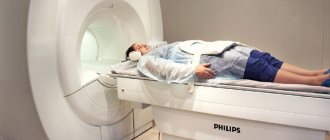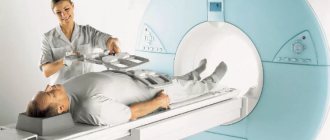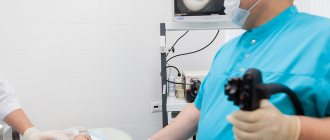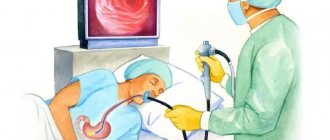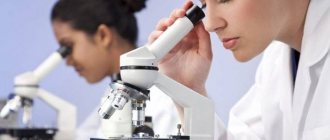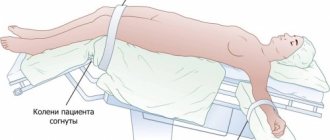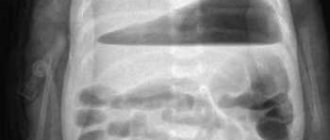FGDS - what is this procedure, preparation, indications and contraindications, complications after
FGDS - what kind of diagnostic procedure it is, preparation for the study with important medical recommendations, indications and contraindications, possible complications, consequences - we will describe all this on the website alter-zdrav.ru.
Such detailed information is often necessary for those patients who are prescribed fibrogastroscopy of the stomach and adjacent organs for the first time. In modern medicine, various diagnostic methods are used to quickly and accurately make a diagnosis. These include radiation diagnostic methods (fluorography, X-ray, angiography, computer, magnetic resonance and nuclear magnetic tomography), direct visual diagnostic methods (fibrogastroduodenoscopy, esophagogastroduodenoscopy, duodenal intubation, coproscopy, etc.).
Quite often, any visual examination of the stomach, based on the insertion of a probe through the oral cavity, is called gastroscopy - FGS (fibrogastroscopy).
Gastroscopy examines the gastric mucosa using a flexible tube (endoscope) inserted into the stomach through the mouth and a camera at its end.
Another type of visual examination - EGDS (esophagogastroduodenoscopy) involves examining the stomach, esophagus, and duodenum with an endoscope.
Visual examination methods allow you to see the condition of the pharynx, esophagus, stomach, duodenum, small and large intestines, gall bladder, take gastric juice, bile, pieces of tissue for analysis, and deliver the medicine precisely. One of the visual inspection methods is the FGDS method.
Risks of gastroscopy
Although gastroscopy is a safe procedure, like all invasive medical procedures, complications are possible.
The following problems are possible:
- An adverse or allergic reaction to medications used for sedation/anesthesia, which may cause problems with breathing, heart rate, and blood pressure.
- During the biopsy, bleeding may occur from the sample site. A very rare complication, usually associated with anticoagulants or bleeding disorders such as hemophilia.
- Rupture of the mucous membrane of the esophagus, stomach or duodenum (perforation). One of the most dangerous possible complications. Fortunately, diagnostic gastroscopy is performed extremely rarely.
Adverse reaction to drugs used for anesthesia
What is FGDS
FGDS (fibrogastroduodenoscopy) is a method of examining the surfaces of the esophagus, stomach and the beginning of the duodenum using an endoscope. In gastroenterology it is considered the most informative method for making and clarifying the diagnosis.
The examination is carried out with a thin flexible probe 8-11 mm thick, which is inserted through the mouth and esophagus into the stomach. The image is projected onto the screen. There is a type of examination where a probe is inserted through the nose.
Advantages of the FGDS method:
- information content;
- safety;
- no pain;
- easy to carry.
The design of the device allows for diagnostics, taking tissue samples for analysis, and performing surgical manipulations at the time of the procedure.
Preparing for FGDS of the stomach - several important recommendations
The FGDS procedure requires certain preparation and it is advisable for the patient to familiarize himself in advance with the requirements that must be met in order for the procedure to be successful and with the greatest information content.
So how can you properly prepare for an FGDS? Can you drink water, what can you eat?
Preparation requirements:
- food that takes a long time to digest (nuts, seeds, fatty and fried meat), as well as products containing coloring substances (coffee, chocolate), carbonated drinks, alcohol, smoked foods should be excluded from the diet 2 days before the examination;
- Meals should be taken 12 hours before the procedure, i.e. you need to have dinner the night before at 18.00, excluding raw vegetables and heavy foods;
- do not smoke 3 hours before the test (smoking increases the volume of mucus in the stomach);
- do not take medications in capsules and tablets on the day of the examination; if this is not possible, notify the doctor conducting the examination;
- if you have an allergy, any disease or something is bothering you at the moment, tell your doctor about it;
- do not drink before the procedure (or at least three hours must pass and only clean water in small quantities);
- do not chew chewing gum;
- if the examination is not carried out in the first half of the day, then you need to consult a doctor about the possibility of eating breakfast;
- clothes should be loose so that unnecessary sensations do not interfere;
- you should not use perfume - it interferes with the doctor;
- bring a sheet (on the couch), a towel;
- immediately before the procedure, remove dentures, if any;
- Before the procedure, you need to calm down, set yourself in a positive mood (excessive anxiety can interfere with the examination) and be ready to do everything that the doctor advises.
Proper preparation of the patient and the right attitude will help you complete the examination without any difficulties.
"VIP Academy": European standards of medicine
The multifunctional uses Japanese equipment. We carry out diagnostics, treatment procedures, biopsies with further study of samples in our laboratory.
Endoscopes have high resolution, which makes it possible to examine mucous membranes with several times magnification to detect pathological changes up to 1 millimeter in size. The results are recorded on digital media.
We have doctors with more than 10 years of experience who specialize, among other things, in working with children.
Based on the results of endoscopy, you can consult a gastroenterologist and undergo a course of treatment from leading specialists in Nizhny Novgorod.
Indications for gastroscopy (FGDS)
Tests and x-rays do not always make it possible to make a diagnosis, but performing an FGDS allows you to see the picture of the disease from the inside, clarify or make a final diagnosis. The examination is mainly carried out to diagnose diseases of the gastrointestinal tract, especially its upper part.
When is FGDS performed:
- in the presence of nausea, heartburn, belching;
- cough for no apparent reason;
- pain when swallowing;
- swallowing dysfunction;
- bloating, gas formation;
- noticeable weight loss;
- abdominal pain, especially in the epigastric region;
- blood in stool;
- vomiting, blood in vomit;
- B12 deficiency anemia;
- with stomach bleeding;
- to deliver a medicinal product;
- remove polyps;
- take tissues, gastric juice for analysis, samples for gastrobacteria, for example, they often jointly perform a urease test for the presence of Helicobacter pylori (Helicobacter pylori);
- monitoring the effectiveness of treatment.
FGDS reveals the following diseases: gastritis, gastric and duodenal ulcers, stomach and esophageal cancer, inflammatory processes in the esophagus, reflux disease, polyps, duodenitis and other diseases.
A timely EGD of the stomach will help diagnose the disease at an early stage, which makes it possible to start treatment on time.
For chronic diseases, FGDS is performed once a year, in other cases - according to the indications and direction of the attending physician.
Contraindications for FGDS
Although the FGDS procedure is informative and without it it is sometimes difficult to make a diagnosis, it cannot always be carried out. There are conditions when research is contraindicated:
- narrowing of the esophagus due to neoplasms and physiological reasons;
- narrowing of the stomach;
- signs of intestinal obstruction;
- severe stomach bleeding;
- mental illness in the acute stage;
- protrusion of the walls of the esophagus;
- aortic aneurysm;
- myocardial infarction;
- stroke;
- disturbances in the functioning of the heart;
- immediately after a hypertensive crisis;
- bronchial asthma;
- strong gag reflex;
- enlarged thyroid gland;
- severe upper respiratory tract diseases;
- severe anemia, obesity;
- blood clotting disorder;
- colds when the procedure is impossible (nasal congestion, cough, laryngeal swelling, high temperature).
Fibrogastroduodenoscopy under sedation
To reduce discomfort in the patient and during upcoming long-term manipulations, FGDS can be performed with immersion in medicated sleep.
Also indications for sleep research are:
- Strong gag reflex.
- Psychomotor impairments that prevent you from remaining still during the examination.
- Patient's wishes.
Emergency EGD is not performed during sleep. The procedure is allowed for children from 7 years of age.
Preparing for such a test is different from preparing for a regular procedure. A consultation with an anesthesiologist and a number of tests are added.
Before the examination:
- A medical history is taken and a decision is made on the possibility of using a sedative.
- A general blood test, tests for HIV, hepatitis, and fluorography are performed.
Immediately before the procedure, the patient needs to remove jewelry and contact lenses. Next, the drug is administered, the patient falls asleep and the examination of the stomach begins.
Sleep time is calculated taking into account upcoming events. After waking up, you usually feel normal, without any significant discomfort. After 1 hour the patient is allowed to go home.
Description of the procedure, what FGDS shows
FGDS is carried out in special diagnostic rooms as planned or urgently, strictly on an empty stomach.
Before the procedure, the patient is introduced to the examination technique, and written permission to conduct it is taken.
FGDS procedure
A nurse or doctor irrigates the throat with lidocaine spray if there is no allergy to it (this issue must be clarified in advance).
The patient is placed on the couch on his left side. The position should be convenient and comfortable for the patient, otherwise he will be tense, and this interferes with the insertion of the probe.
A mouthpiece is inserted into the mouth for ease of insertion of the endoscope (sometimes the device for FGS is called a gastroscope) and so as not to injure the mucous membranes of the lips and mouth.
The doctor begins to insert the endoscope, the patient, at the doctor’s command, performs a swallowing movement. At the time of administration, a gag reflex may appear, but if you breathe deeply and calmly, this condition goes away. After insertion of the endoscope, you should not swallow; saliva is collected by suction.
When the probe is inserted, air is introduced into the stomach (to straighten the folds) so that the mucous membrane can be better examined.
The duration of the procedure is 5-10 minutes and, if the doctor’s requirements are met, does not cause much discomfort to the patient.
If any therapeutic measures are carried out, then the time of its implementation reaches 30 minutes.
In some cases, the study is performed under general anesthesia (children, the patient’s agitated state, complete pain intolerance).
With FGDS you can see:
- what is the condition of the mucous membrane and walls of the stomach and esophagus;
- scar formation;
- narrowing of the lumen of the esophagus;
- degree of reflux (reflux - stomach contents enter the esophagus);
- various neoplasms.
After the procedure, the endoscopist issues an FGDS conclusion - the result of the examination, a description of the consistently seen picture of the mucous membranes of the esophagus, stomach, pylorus, and duodenal bulb. The presence of free patency, peristalsis, the amount of gastric secretion/bile reflux, varicose veins, plaque, closure/insufficiency of the cardiac rosette, inflammation (hyperemia, swelling), folds, and damage are indicated.
Quite often, a biopsy is taken - a microscopic piece of the mucosa to check for the presence of malignant cells.
Complications after FGDS
A correctly performed FGDS procedure and the patient's compliance with the doctor's recommendations practically do not result in complications. The most serious complication is a violation of the mucous membrane of the esophagus or stomach, infection.
To avoid unwanted reactions of the body, any complications, the doctor always asks about the presence of diseases, and the patient must tell about his individual characteristics, about his condition before the examination (if he does not like something about his feelings).
Complications after FGDS:
- body temperature rises to 38 degrees;
- black color of stool;
- gag reflex and blood in vomit;
- pain in the abdominal area.
If you have any undesirable symptoms, you should definitely consult a doctor.
Side effects
Typically, FGDS is well tolerated by patients, but sometimes after the procedure the following are noted:
- Feeling of bloating, fullness in the intestines.
- Pain in the stomach, lower abdomen.
- Sore sensation in the throat.
The discomfort goes away during the day; if necessary, you can take a drug with an antispasmodic effect.
If the symptoms have not gone away the next day, or there is an increase in temperature to 38°C or higher, sharp pain, stomach cramps, vomiting, diarrhea, then you should consult a doctor.
